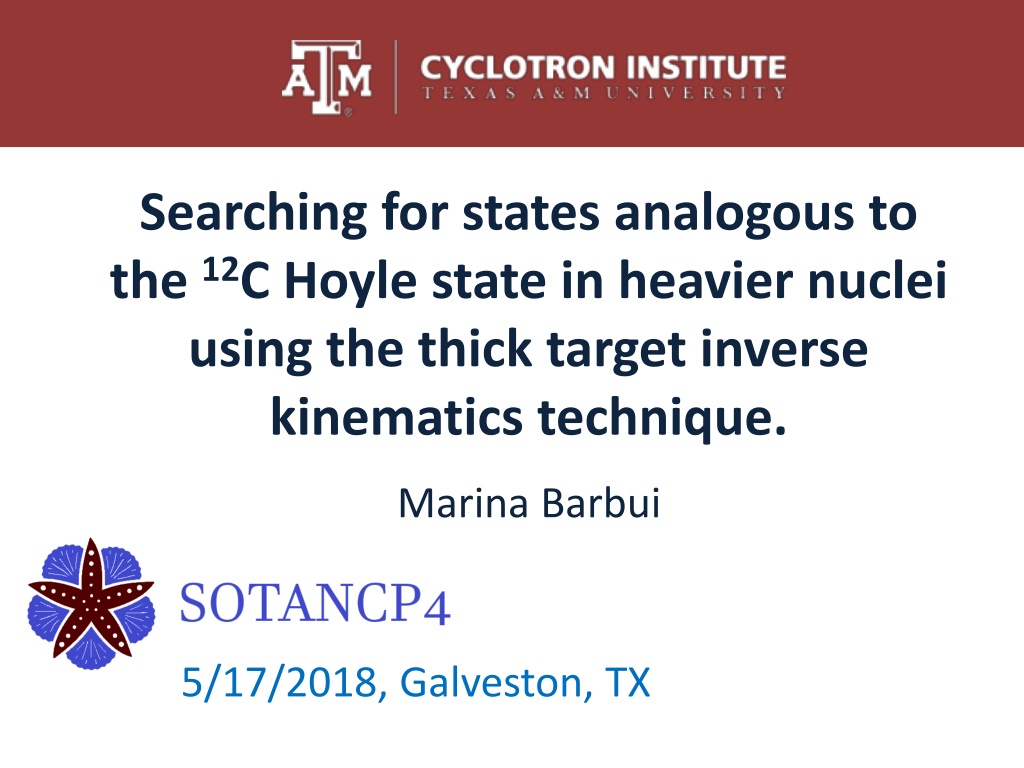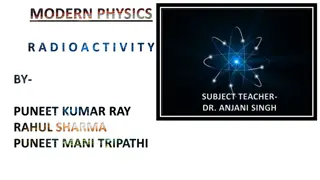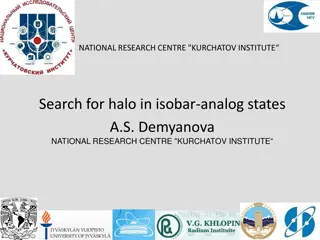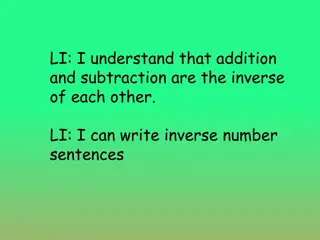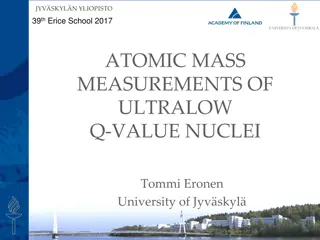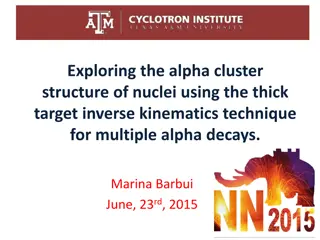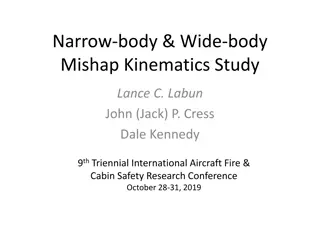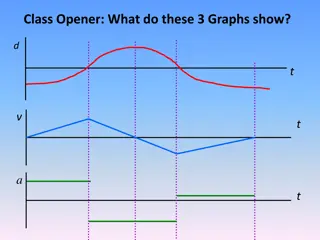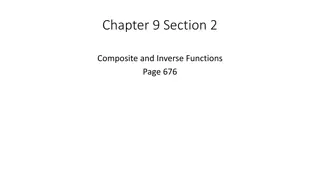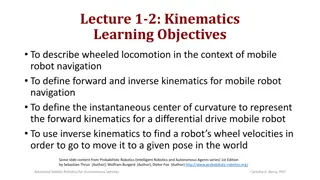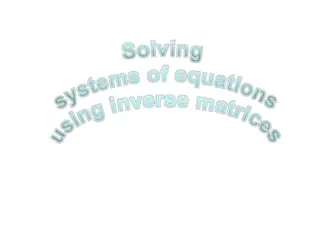Exploring States Analogous to 12C Hoyle State in Heavy Nuclei Using Inverse Kinematics
The study discusses the search for states similar to the 12C Hoyle state in heavier nuclei through the thick target inverse kinematics technique. It explores alpha clustering in nuclei, the thick target inverse kinematics method, events with alpha multiplicities, and more experimental details related to detecting multiple alpha emissions.
Download Presentation

Please find below an Image/Link to download the presentation.
The content on the website is provided AS IS for your information and personal use only. It may not be sold, licensed, or shared on other websites without obtaining consent from the author. Download presentation by click this link. If you encounter any issues during the download, it is possible that the publisher has removed the file from their server.
E N D
Presentation Transcript
Searching for states analogous to the 12C Hoyle state in heavier nuclei using the thick target inverse kinematics technique. Marina Barbui 5/17/2018, Galveston, TX
Alpha clustering in nuclei Estimated limit N = 10 for self-conjugate nuclei(Yamada PRC 69, 024309) Ikeda diagram (K. Ikeda, N. Takigawa, and H. Horiuchi, Prog. Theor, Phys. Suppl. Extra Number, 464, 1968.) Many theoretical works have brought to the picture of alpha cluster nuclei described as a diluted gas of alphas in the lowest S state. (PRL 87, 192501; PRC 75, 037303). Possible existence of alpha condensates in nuclear matter. Experimentally only few not conclusive works are available for 16O or heavier Look for states analogous to the 12C Hoyle state using the thick target inverse kinematics technique
The thick target inverse kinematics technique Allows covering a large range of incident energies in the same experiment. In the inverse kinematics, the reaction products are focused at forward angles. Allows measuring reaction products emitted at 0o. This Method has been used several times to study resonant elastic scattering or transfer reactions and is used here for the first time to detect multiple alpha emission. Limit: The position of the interaction point inside the gas has to be reconstructed with some assumptions Pressurized chamber 4He gas, pressure sufficient to stop the beam before the detectors 4 E-E telescopes Monitor detector 20Ne Beam 9.7 and 12 AMeV Havar window
Events with alpha multiplicity 1 At 12AMeV the statistical evaporation plays an important role. This contribution is estimated using the PACE4 code and the HIPSE, both run with beam energy steps of 0.5 MeV/nucleon
Events with alpha multiplicity 1 The resonant elastic scattering is our reference reaction. We can compare the result with existing cross sections and have a double check for the beam intensity obtained from the monitor. This data PRC 43(1991)2523 Comparison with the excitation function measured in 10-15 keV energy steps in normal kinematics at 168o in the center of mass By R. Abegg and C.A. Davis
Events with alpha multiplicity 2 12AMeV Contribution from statistical evaporation estimated using PACE4
Events with alpha multiplicity 2 9.7 AMeV After subtracting the contribution from statistical evaporation
Events with alpha multiplicity 2 20Ne @ 12 and 9.7 AMeV +4He 2 alphas in the same event are correlated in time T<30 ns 8Be 20Ne 16O Reconstruction of the interaction point with a recursive calculation based on conservation of energy and momentum and the assumptions: 1) The 2 alphas come from a 8Be 2) The 16O is in the ground state Ek_ _lab -> Ek(8Be) E*(8Be) = Ecm_ 1+Ecm_ 2+ Qgg Since the 2 alphas have similar and quite large energy in the laboratory and travel similar flightpaths the energy loss correction almost cancels out when we calculate 8Be excitation energy specially at energies close to the threshold.
Events with alpha multiplicity 2 12 AMeV beam PACE4 Mixed events Fixed interaction point at 27 cm from the window Background due to statistical evaporation estimated with PACE4 The background is also estimated by mixing alpha particles from different multiplicity two events
Events with alpha multiplicity 2 Data PACE4 Mixed events Data PACE4 Mixed events
Events with alpha multiplicity 3 20Ne @ 12 AMeV +4He 3 alphas in the same event are correlated in time T<30 ns 12C1 20Ne 12C2 Reconstruction of the interaction point with a recursive calculation based on conservation of energy and momentum and the assumptions: 1) The 3 alphas come from a 12C with enough excitation energy to break into 3 alpha particles 2) The other 12C is in the ground state Ek_ _lab -> Ek(12C1) E*(12C1) = Ecm_ 1+Ecm_ 2+Ecm_ 3+ Qgg (7.26MeV) Since the 3 alphas have similar and quite large energy in the laboratory and travel similar flightpaths the energy loss correction almost cancels out when we calculate 12C excitation energy specially at energies close to the threshold.
Events with alpha multiplicity 3 Data PACE4 Mixed events Hoyle Relative energy of the three couples of alpha particles -> Tells us if the decay is proceeding through the 8Be ground state. Dalitz Plot -> Information about the energy and momentum of the emitted alpha particles. (3-) at 9.64 MeV
7.65 MeV (0+) Hoyle State decays through 8Begs Experiment In agreement with Monte Carlo simulation of the Hoyle state decaying through the 8Be ground state Simulation
9.64 MeV (3-) decays through 8Begs Experiment In agreement with Monte Carlo simulation of a 3- state decaying through the 8Be ground state Simulation
Events with alpha multiplicity 4 20Ne @ 12 and 9.7 AMeV +4He 4 alphas in the same event are correlated in time T<30 ns 16O 20Ne 8Be Reconstruction of the interaction point with a recursive calculation based on conservation of energy and momentum and the assumptions: 1) The 4 alphas come from a 16O with enough excitation energy to break into 4 alphas 2) The 8Be is in the ground state Ek_ _lab -> Ek(16O) E*(16O) = Ecm_ 1+Ecm_ 2+Ecm_ 3+Ecm_ 4+ Qgg (14.4 MeV) Only -particles with energy larger than 13 MeV are selected in order to cut those from the 8Be emitted in opposite direction.
Events with alpha multiplicity 4 Interesting structure at 15.2 MeV 8 events Interesting structure at 15.2 MeV 83 events 20Ne 12 AMeV 20Ne 9.7 AMeV (Be)/ (Hoyle) (Be)/ (Hoyle) (Be)/ (Hoyle) Energy This work 9.7 AMeV This work 12 AMeV Freer et al. PRC 51, 1662 15.2 0.2 1 0.7 0.96 0.3 17.1 0.6 0.3 0.7 0.3 0.65 0.16 17.5 0.6 0.3 0.72 0.18 19.7 0.43 0.2 0.6 0.5 0.47 0.15 21.4 5.3 2.8 3 1 >3 1.1
20Ne 9.7 AMeV Further analysis for the peak at 15.2 MeV 34 MeV Yamada et al. predicted an excited state in 24Mg analogous to the Hoyle state at 33.42 MeV, 4.94 MeV above the 6 alpha particles threshold.
Conclusions Using the suggested technique it is possible to identify states near the alpha decay threshold in 8Be and 12C. 4 events -> show a structure at 15.2 MeV possible candidate for a state analogous to the Hoyle state in 16O (candidate 0+ state predicted at Ex 15.1 MeV). The few events in this peak decay equally into - alpha + 12C(Hoyle) - 2 8Be(gs)
Thank you for your attention! M. Barbui, K. Hagel, J. Gauthier, R.Wada, S. Wuenschel, X-G. Cao V.Z Goldberg and J.B. Natowitz (Cyclotron Institute, Texas A&M University, College Station, TX, USA ) R. T. deSouza, S. Hudan (Indiana University, Bloomington, IN, USA) D. Fang (Shanghai Institute of Applied Physics (SINAP), Chinese Academy of Sciences, Shanghai, China)
